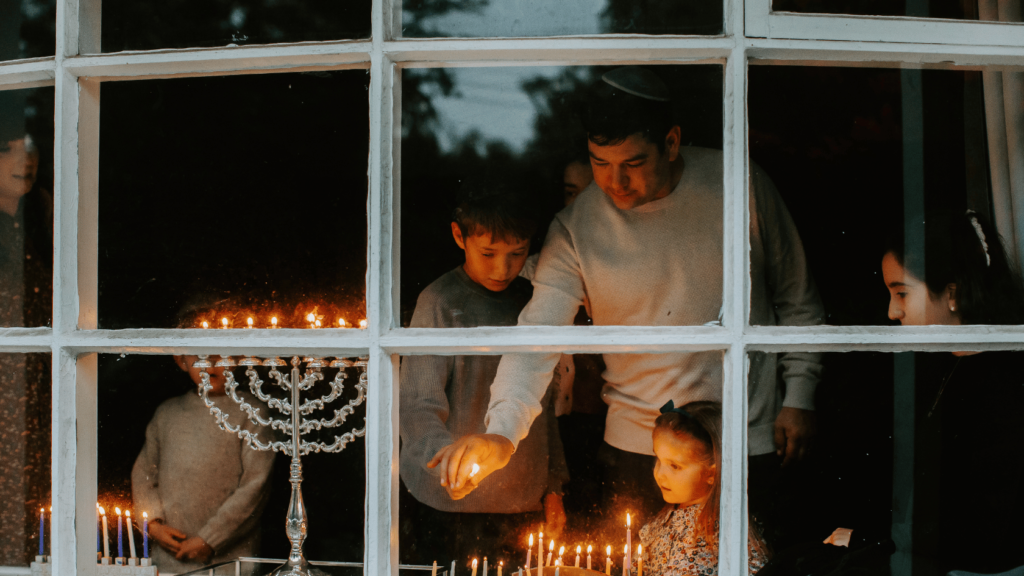What Is Hanukkah?
Hanukkah, often referred to as the Festival of Lights, marks an eight-night celebration deeply rooted in Jewish history. Originating from the Maccabean Revolt, this festival commemorates the miracle of a small amount of oil that sustained the sacred Menorah for eight nights, symbolizing hope, perseverance, and divine intervention. As winter descends, so does the warmth of Hanukkah, bringing communities together in the glow of candlelight to rejoice in the triumph of light over darkness.

Significance of the Festival
Hanukkah holds profound significance within the Jewish faith, embodying themes of freedom, faith, and cultural identity. The festival serves as a commemoration of the re-dedication of the Holy Temple in Jerusalem and the resilience of a community that stood against oppression. Each candle lit on the Menorah represents not only a historical event but also serves as a beacon of hope, reminding us of the enduring power of faith and the ability to overcome challenges.
Invitation to Explore Traditions, Foods, and Joyful Moments:
This journey through Hanukkah is an invitation to explore the vibrant tapestry of traditions, culinary delights, and the joyful moments that define the celebration. From the ritualistic lighting of the Menorah and the spirited games of dreidel to the sizzling aroma of traditional foods, Hanukkah offers a multi-sensory experience. Join us as we unravel the threads of custom and culture, discovering how families come together to create lasting memories, forging bonds that transcend time. Whether you are well-acquainted with Hanukkah or embarking on a new cultural exploration, this guide beckons you to embrace the beauty of Hanukkah’s rituals, relish its flavorful traditions, and revel in the pure joy that permeates the season.
Historical Background: The Maccabean Revolt
At the heart of Hanukkah lies the tale of the Maccabean Revolt, an uprising led by a group of Jewish rebels known as the Maccabees against the oppressive Seleucid Empire in the 2nd century BCE. Their triumphant reclaiming of the Holy Temple in Jerusalem marks the historical genesis of Hanukkah, a testament to the enduring spirit of resistance and freedom.
The Miracle of the Oil and the Significance of the Menorah:
Central to the Hanukkah narrative is the miraculous event of a small flask of oil meant to last for just one day miraculously burning for eight nights. This divine occurrence is commemorated through the lighting of the Menorah, a symbolic candelabrum with eight branches, each representing one night of the miraculous illumination. The Menorah, with its flickering lights, becomes a potent emblem of hope, resilience, and the enduring light of faith.
Understanding the Eight Nights of Celebration:
Hanukkah spans eight nights, a numerical reflection of the miracle of the oil. Each night, a new candle is kindled, progressively brightening the darkness. The additional ninth candle, the Shamash, serves as the “helper” candle used to light the others. Families come together to light the Menorah, recite blessings, and partake in festivities, with each night holding a unique significance and illuminating various aspects of the festival’s rich history and cultural heritage. This eight-night celebration invites reflection, gratitude, and the joyous acknowledgment of the festival’s historical and spiritual layers.
What do Jews do the first night of Hanukkah?
On the first night of Hanukkah, Jewish families typically gather to light the first candle of the menorah. The menorah, also known as a Hanukkiah, has nine branches, with one candle lit on the first night, and an additional candle added each subsequent night until all eight candles (plus the central “Shamash” candle) are illuminated. The candles are lit from left to right, and blessings are recited during the lighting ceremony. After lighting the candles, families often engage in festive meals, exchange gifts, play the dreidel game, and celebrate the beginning of the Festival of Lights. The specific customs and traditions may vary among Jewish communities and individual families.




